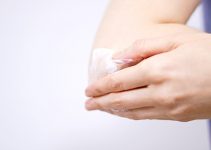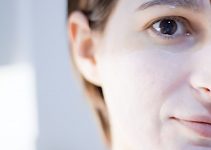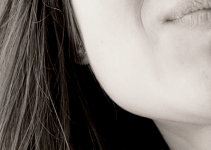The answer to the question exfoliate before or after toner is actually determined by the type of exfoliator for face that you’re using.
The answer depends on whether we’re using scrubs, chemical peels for face or AHA/BHA/enzyme exfoliants. Let’s see how the type of exfoliant determines the answer.
If you’re not using any type of exfoliant, the order in which you apply skincare products is this:
- in the morning: cleanser, toner, antioxidant serum, eye cream, spot treatment, moisturizer, sunscreen
- in the evening: makeup remover + cleanser, toner, eye cream, serums/treatments, moisturizer/night cream
If you’re interested in knowing more about toners, check out my article on the best toners for acne.
Contents
My Favorite Toners & Exfoliators
1. The Best: Paula’s Choice 2% BHA Liquid Exfoliant, 4 oz
The Paula’s Choice 2% BHA Liquid Exfoliant is the perfect product to recommend when we’re talking about whether we should exfoliate before or after toner because this one can be used both as an exfoliant and as a toner. But you should only incorporate it in your nighttime routine. It’s amazing both as a chemical facial exfoliator and as a toner. And it works for all skin types.
2. Anti-aging & anti-acne: Pixi Glow Tonic, 8 oz
Another toner that can also replace an exfoliant for our face is this Pixi Glow Tonic. The main ingredient is the 5% glycolic acid. It’s a good concentration and it can be used even by those who haven’t used chemical exfoliants before. I love glycolic acid both as an anti-acne and anti-aging ingredient. It’s one of my favorites and the Pixi Glow Tonic is the perfect product for those who don’t want to wonder whether they should exfoliate before or after toner because they can use the same product for both. It works for all skin types but I recommend only using it at night. Leave the day for hydration and UV protection.
Exfoliate Before or After Toner: When It’s Before & When It’s After
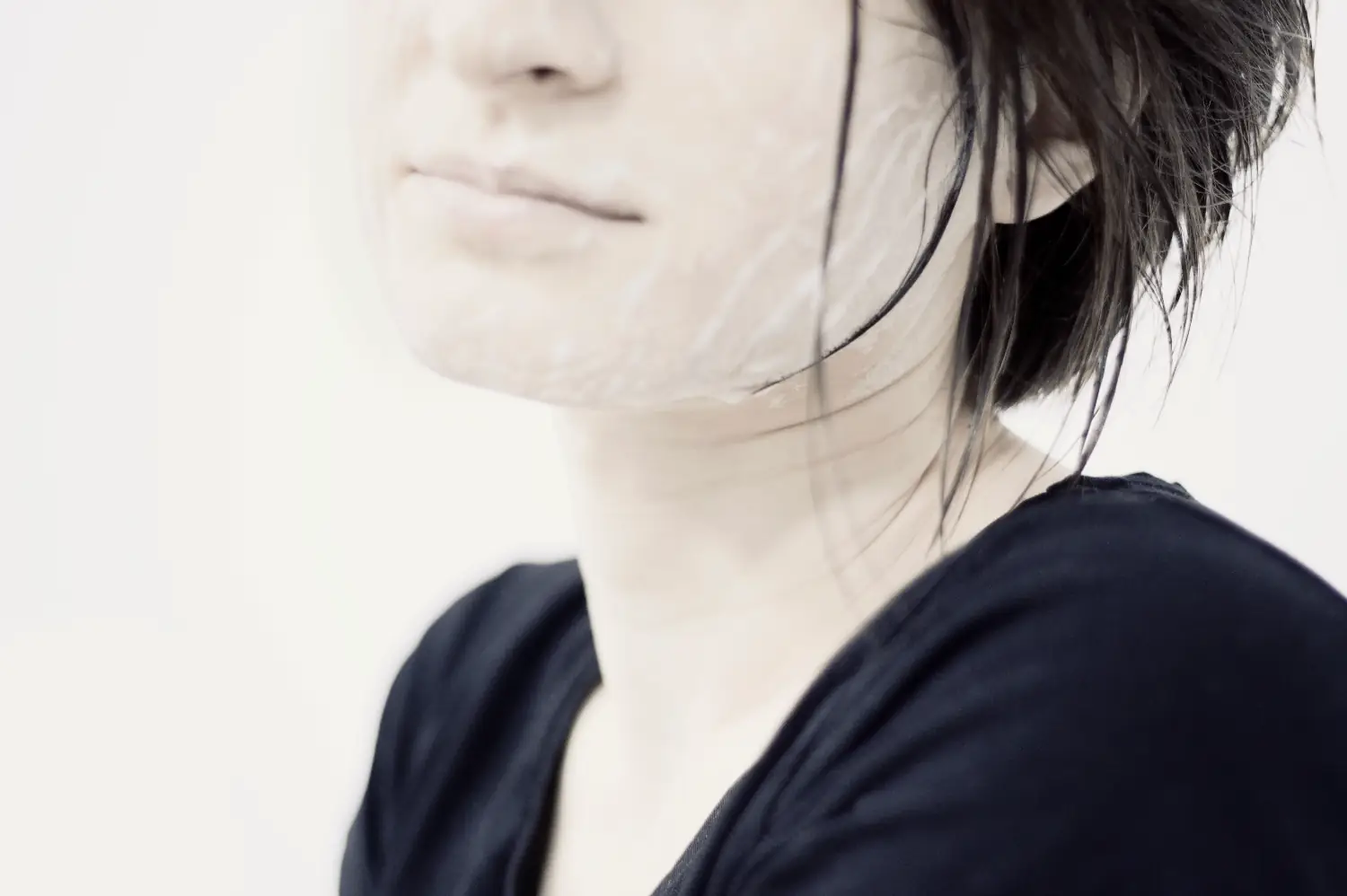
We should always exfoliate before toner when we’re using a scrub.
Moreover, we should always exfoliate before toner when we’re using a chemical peel or a chemical exfoliant for face that precisely states that it should be washed off our faces after a number of minutes has passed.
Those are the situations where the answer to the question exfoliate before or after toner is before.
If we’re using a chemical exfoliator that needs to be left overnight, an AHA, BHA or enzyme exfoliant, then we’re going to apply that chemical exfoliator after cleanser and toner.
That’s the situation where the answer is always after.
What we can gather from this simple introduction is that whether we exfoliate before toner or after toner depends on what type of facial exfoliator we’re using.
That’s for you to establish because there are many exfoliators to choose from: scrubs, chemical exfoliants for face, facial chemical peels, etc.
There are also facial cleansers that contain AHA or BHA acids. In that case we get a cleanser + exfoliant in the same product in which case you might not feel the need to use an additional chemical exfoliant for your face.
If you’re using a face wash with 2% salicylic acid should you also exfoliate? Not necessarily. I do use a cleanser with acids and then I also use a chemical exfoliant but that’s because they’re both gentle skincare products. Thus, it depends on how gentle your products are and how sensitive your skin is.
Exfoliate Before Toner: Scrubs, Chemical Peels & Cleansing Brushes
Let’s see which are the best facial scrubs that are used before toner.
We’ll also see if chemical peels, which are also used before toner, are awesome exfoliants for the face.
1. Scrubs: use gentle facial scrubs
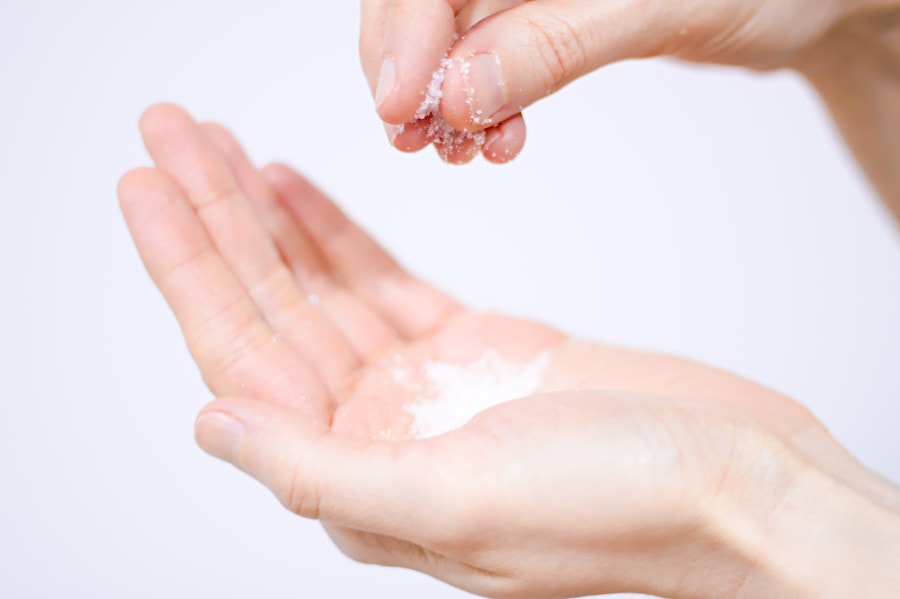
If you’re going to use scrubs as your facial exfoliator, I always recommend using gentle facial scrubs.
These are the types that can be used as a cleanser + scrub.
Gentle facial scrubs are usually used 2 times a day, in the morning and evening, just like we would use a face wash.
Examples of gentle facial scrubs that both cleanse and exfoliate are: Aveeno Positively Radiant Facial Scrub and Cetaphil Extra Gentle Daily Scrub. These two are amazingly popular, cheap and very good skincare products overall.
If you’re using a separate cleanser and a separate scrub, then you’ll have to wonder which comes first: the cleanser or the scrub?
Garnier tells us that we should scrub before cleansing. In this article, according to them, scrubbing first removes residue, dead skin cells and dirt. Following the scrub with a cleanser helps wash away any dead skin cells or particles that were lifted by the scrub.
Proactiv basically tells us that it’s up to us. In this article, they mention the same thing about scrubbing before using a cleanser that Garnier mentioned. In case of cleansing before scrubbing, Proactiv tells us that the cleanser washes off everything from our face, leaving a clean slate for the scrub to take care of business deep in the pores.
I haven’t used a scrub in the last few years because I switched to chemical exfoliators. Generally, I would prefer using a scrub after washing off my face.
However, you can do like Garnier suggested and scrub before cleanser. I don’t think you can go wrong with either.
Try it both ways and see how it goes for your face.
Where to Buy?
Check Price & User Reviews Here
2. Chemical peels as facial exfoliants

Over the counter chemical peels are not something that many people want to try because these are very strong exfoliants. Many have doubts that their skin could handle them and I totally agree.
I would recommend chemical peels only to people who have been using gentle chemical exfoliants for at least a year.
You need to know that your face is accustomed to AHA (glycolic acid, lactic acid), BHA(salicylic acid) and enzymes.
Chemical peels contain high concentrations of acids.
Think of The Ordinary Peeling Solution that contains AHA 30% + BHA 2%.
Or think of the Perfect Image Pineapple Pumpkin Enzyme Peel 30%.
When we’re talking about chemical peels those are the type of products we’re talking about. High concentrations of acids or enzymes.
Another characteristic is that you only need to leave them on the skin for a bit before washing the peel off. Thus, always follow the instructions written on the packaging. Don’t exceed the time recommended by the manufacturer.
The steps are (always use at night):
- cleanse your face
- apply the peeling solution
- always leave it on for the time recommended in the instructions
- wash it off
- apply toner, eye cream, very nourishing moisturizer for your skin type
That’s your routine for the evening when you’re doing a chemical peeling at home.
Where to Buy?
Check Price & User Reviews Here
3. Cleansing brushes
Cleansing brushes represent another physical exfoliation method.
They’re very effective at removing dead skin cells but you must also know how to pick the right brush for your skin type.
If you have sensitive skin you’ll need a brush that clearly states that it can be used by people with sensitive skin.
Silicone cleansing brushes are the best for exfoliating sensitive skin.
If you have normal skin, the choice is a lot easier to make. For example, you can buy the Olay Facial Cleansing Brush, which is cheap and very good for normal skin.
Where to Buy?
Check Price & User Reviews Here
Exfoliate After Toner: Chemical Exfoliants for Face
These are the products that contain acids or enzymes. As chemical exfoliants, the two most frequent forms in which you can buy them are: pads or serums.
But they can also be used as ingredients in cleansers, toners, and moisturizers.
If you’re buying a toner for acne, there’s a very high chance that it’s going to contain either glycolic acid or salicylic acid. Additional ingredients might include zinc, hyaluronic acid, aloe vera, witch hazel, etc.
If we’re using AHA, BHA or enzyme exfoliators and we already know that we need to apply them after toner, when do we actually incorporate them into our routine?
Since these types of products are left overnight to do their magic and remove dead skin cells, let’s revise our correct order of skin care products for the evening.
In the evening: makeup remover + cleanser, toner, eye cream, serums/treatments/chemical exfoliants, moisturizer/night cream.
You don’t need to wait for the chemical exfoliant to absorb or dry. You can apply the moisturizer/night cream immediately after.
If you’re using an AHA, BHA or enzyme exfoliant you must make sure that it doesn’t clash with other serums or treatments that you might use.
For example, don’t use a retinol product and a chemical exfoliant during the same night.
Even if you’re using a night cream with retinol, I wouldn’t advise using an AHA, BHA or enzyme exfoliant in the same evening.
Moreover, use the chemical exfoliant as often as it’s recommended. Some are gentle enough that can be used even every night but others can only be applied 1-3 times a week.
1. AHA and BHA exfoliants
The two main types of acids that chemical exfoliators for the face contain are: AHA or BHA.
AHA stands for alpha-hydroxy acids. The main types of AHAs for face are:
- glycolic acid (sugar cane)
- lactic acid (sour milk, tomato juice)
- malic acid (apples)
- citric acid (citrus fruits)
- tartric acid (grapes)
AHA acids have numerous benefits:
- removal of dead skin cells
- brighter, smooth skin
- they’re very good for sensitive skin
- awesome for restoring dry skin
- create the appearance of smaller pores
- hyperpigmentation – very good if you want to fade acne spots more quickly
- improve appearance and texture for sun damaged skin
- stimulate collagen production for smoothing out fine lines and wrinkles
BHA stands for beta-hydroxy acids. The most popular BHA in the skincare industry is salicylic acid. It’s already famous around the globe so I don’t need to say too much about it.
Salicylic acid has the following benefits:
- awesome exfoliant for combination, oily and acne-prone skin – salicylic acid is oil soluble
- one of the best over-the-counter ingredients for acne-prone skin
- great for sensitive skin
- unclogs the pores by removing excess oil and dead skin cells
- minimize the appearance of breakouts
Where to Buy?
Check Price & User Reviews Here
2. Enzymes exfoliators
Enzymes that act as an exfoliator for face are:
- bromelain (pineapple)
- papain (papaya)
- actinidin (bananas)
- pumpkin enzymes
As you can see, enzymes are sourced from fruits. They exfoliate the face in the same way that acids do.
The difference is that enzymes are very gentle. If you have an extremely sensitive face, you should first try enzymes to get rid of dead skin cells.
On the other hand, if you buy an enzyme peel that means that you should only leave it on the face for a short period of time, usually 10-15 minutes. That means that the toner is applied after the peel is removed.
It depends on what type of skincare exfoliant you’re using.
Why you should exfoliate
Exfoliation is a lot more necessary than using toners. If you’ve got to pick between these two products, choose to get an exfoliant.
Even if it’s a cleanser with acids or a gentle facial scrubs, like the cheap ones from Cetaphil or Aveeno. Choose a product that is within your budget but definitely get something that will remove dead skin cells from your face.
Facial exfoliation, especially when chemical exfoliators are used, is absolutely necessary because:
- removes dead skin cells
- prevents pores from getting clogged which can prevent breakouts and blackheads
- ensures a more even skin tone
- acids have anti-inflammatory properties that soothe irritated skin
- brighter complexion
- brightens dull and dehydrated skin
- restores natural radiance
- exfoliators can diminish fine lines and wrinkles acids and enzymes stimulate collagen production
- hydrates the skin, increases natural hydration – chemical exfoliants are very good for dry skin
- allows other products and ingredients to penetrate deeper into the skin, which makes them more effective
How often should you exfoliate?
It really depends on the type of product you’re using, your skin type, and what you’re trying to achieve.
Each exfoliating product should come with its own instructions that guide users on how they should be used and how often.
You can use 5% glycolic acid pads every night or you can get some who have a higher concentration of acids that will be used only 1-3 times per week.
Chemical peels should not be used more than once or twice a week. It depends on how experienced you are and how sensitive your skin is.
Gentle facial scrubs can be used twice daily as both a cleanser and a scrub.
Some cleansing brushes can be used twice daily, applying the cleanser on the wet brush and then moving it in circular motions for about a minute.
Other cleansing brushes are only meant to be used 2-3 times per week.
The best way to answer the question how often you should exfoliate is by being guided by the exfoliator you plan on using.
Is a toner necessary?
This is a totally logical question to ask ourselves. I don’t believe that it’s necessary, it’s not at the top of my list of skincare products. I buy it when it’s within my budget because it makes my skin feel awesome.
We have so many products to buy: cleanser, eye creams, exfoliant, antioxidant serum, anti-aging serums & creams, moisturizer, sunscreen, treatments. These are essential for a beauty routine.
Let’s not talk about what we need for our body and hair. Check out my article on argan oil vs jojoba oil if you’re interested in essential oils that are good for our face, body and hair.
Some of us, while peeking at our wallet, will think: do I really need a toner? How good is it for our face?
What does a toner do?
According to Neutrogena, a toner refreshes the skin without stripping it of its natural moisture. Furthermore, it prepares the skin for deeply absorbing the products that are part of our skincare routine.
A toner can also be used to further remove any lingering residues from the skin, after cleansing it.
Nevertheless, what a toner does is based on what ingredients it contains. It can be hydrating, anti-breakouts, anti-aging, etc.
If you’re getting one for acne-prone skin, it can contain glycolic or salicylic acid.
If you’re buying one for dry skin, it will contain ingredients like hyaluronic acid, vitamin E, glycerin, oils, natural extracts and they’ll be alcohol-free.
Anti-aging face toners will feature ingredients like panthenol, rosewater, chamomile extract, antioxidants, AHAs (glycolic, lactic acid), glycerin, hyaluronic acid, etc.
Pixi Retinol Tonic actually contains retinol and other ingredients that make it work as an anti-aging or an anti-acne product.
There are also astringents, which are quite different. Astringents contain alcohol and are used by people with oily skin. They can help remove excess oil and unclog pores.
Another skincare product that you can use is essence, which is applied on top of the toner. Essence is a product that contains many active ingredients that moisturize, protect, and boost skin’s health.
All in all, skincare products can be awesome if you pick the right one. And now you know the full, in-depth, complex answer to the question exfoliate before or after toner.





